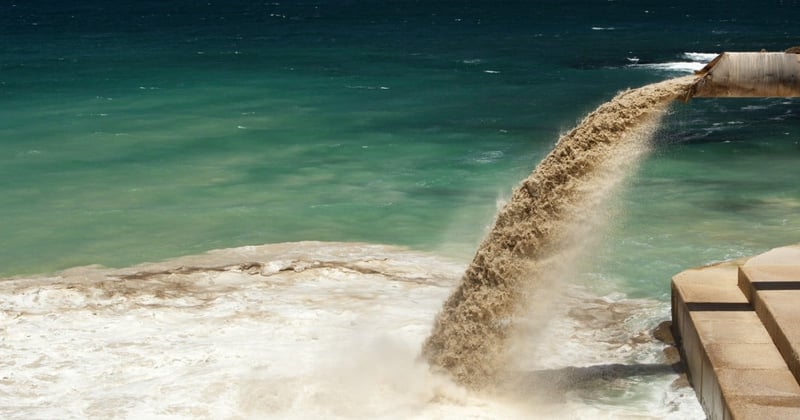
Factory farming harms more than just farmed animals. Learn how factory farming affects marine wildlife, too.
Factory farming is the current industrialized system in the United States that is responsible for the death of billions of farmed animals each year. While the 99% of farmed animals in the US live on factory farms, these intelligent and sentient animals endure great depths of pain and suffering so that corporations may maximize their profits and continuously produce more and more meat and dairy. However, farmed animals aren’t the only animals who suffer under this cruel system.
This World Ocean’s Day, take a look at three ways factory farming harms oceanic ecosystems and the wild animals living within them.
1. Nutrient runoff from factory farms kills ocean wildlife and their food sources.
When excess groundwater from storms and melting snow passes through factory farm land, it carries with it farmed animal manure and fertilizers, which then trickle into our oceans through lakes and streams.
Additionally, because the water used to clean factory farm facilities becomes polluted with excrement, hormones, antibiotics, and bacteria (and thus cannot be safely returned to the water system), it is stored in giant, open-air lagoons that are prone to leakage and further runoff.
A factory farm.
This nutrient runoff results in the growth of oceanic vegetation like algal blooms, a process known as eutrophication. These blooms are killing the food sources of larger wildlife like manatees, who predominately consume seagrass. The destruction of food sources can lead to animal endangerment and even extinction.
2. Factory farms drive up the percentage of greenhouse gases, which warm our oceans and kill marine life.
Ocean deoxygenation, the process of our oceans losing oxygen due to human activities, is rampant. Not only can it be caused by nutrient runoff, but it also occurs as a result of oceanic warming.
The greenhouse gases produced by factory farms encompass at least 45% of total agricultural emissions. As greenhouse gases are released into the atmosphere, they trap Earth’s energy and heat and raise the atmospheric temperature.
When temperatures in the atmosphere increase, the temperatures of our oceans do as well. This leads to a decrease in oxygen in the water, the death of marine life dependent on this oxygen, and an increase in oceanic acidity (which contributes to coral bleaching and coral death).
There is even a term for oceanic regions that contain little to no oxygen: ‘dead zones.’
Bleached coral in the ocean.
3. Industrial ocean fish farming, also known as marine aquaculture or pisciculture, devastates oceanic ecosystems while farmed fish suffer.
Factory farming doesn’t only occur on land. Open ocean fish farms exist, too—in fact, globally, more seafood is produced from fish farms than from traditional wild catch. In oceans and rivers, fish are confined in commercialized enclosures called “aquafarms,” where they are packed so unnaturally close together that the use of antibiotics to prevent disease is common practice, just like on factory meat and dairy farms. Despite this, fish still develop parasites and other illnesses resulting in widespread suffering and subsequent toxic nutrient runoff that pollutes our oceans and endangers other aquatic species.
In addition, the species of fish most commonly farmed—such as salmon, trout, and catfish—play crucial roles in balancing the ecosystems in which they belong. Intensive aquaculture negatively impacts marine biodiversity—especially within the vicinity of the fish farms themselves.
Aquaculture.
You can choose not to support factory farms and instead support the health of our oceans and save the lives of farmed and marine animals by reducing your meat consumption.


